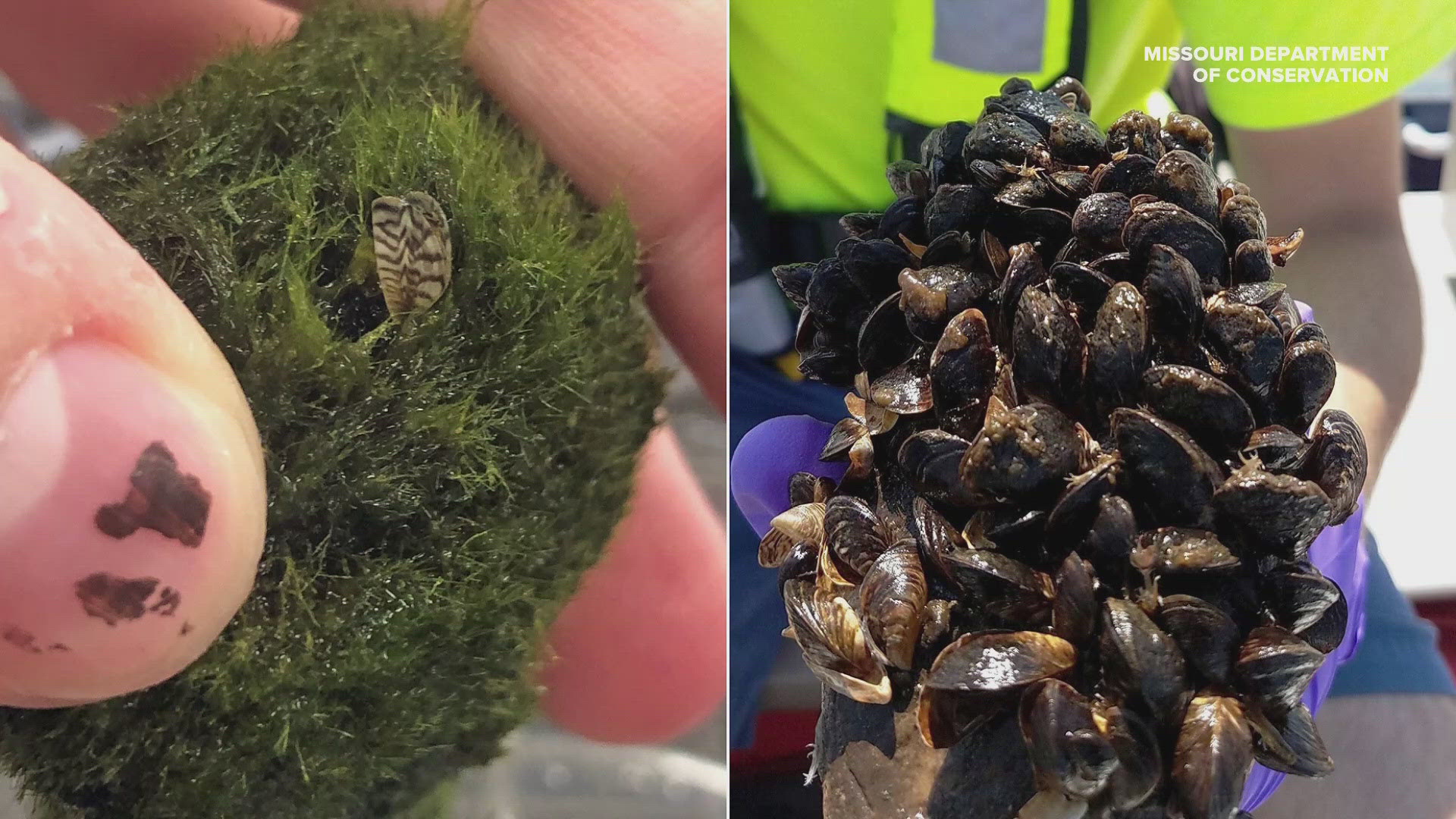MISSOURI, USA — Seemingly harmless balls of moss used in aquariums may be hiding one of the nation's "most destructive invasive species in North America," the Missouri Department of Conservation recently warned.
Zebra Mussels, fingernail-sized black-and-white striped mollusks, were found hiding in the popular aquarium additive in Washington state, and MDC warned the infected moss balls may have been distributed to Missouri buyers as well.
Moss balls infected with zebra mussels may also carry zebra mussel larvae which, when aquarium water is poured down drains, may introduce the invasive mussels to nearby bodies of water, spelling danger for numerous local public and ecological systems.
"Zebra mussels can clog power plants, industrial and public drinking water intakes, foul boat hulls and motors, decimate populations of native freshwater mussels, impact fisheries, and disrupt aquatic ecosystems," MDC said on its website. "MDC urges retailers and aquarium owners who bought moss balls in the last year to check them for zebra mussels and decontaminate or dispose of if found."
It's not the first time the mussels have tried to hide their way into Missouri's waters. A similar statewide warning was issued in 2021.
The U.S. Fish & Wildlife Service shared numerous tips for destroying infected moss balls and decontaminating affected aquariums:
- Infected moss balls should either be placed inside a sealable plastic bag and frozen for at least 24 hours, or boiled in water for at least a full minute.
- Dispose of the moss balls in the trash.
- Any boiling water used should be disposed of down a household drain.
- Collect any fish from the infected aquarium and place them in another uncontaminated container.
- Remove water from the aquarium and sterilize by adding 1/3 cup of bleach per gallon of water and let it sit for at least 10 minutes before disposing of the mixture down a household drain.
- Decontaminate the aquarium and accessories either by pouring 120 °F water and covering all accessories for at least five minutes, or by soaking the aquarium and all accessories inside using 1/2 cup of salt per gallon of water for at least 24 hours.

